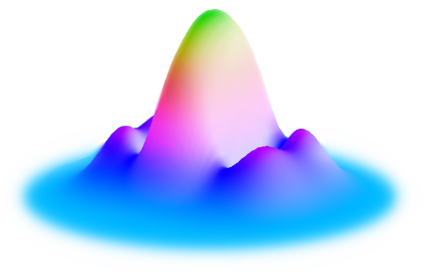Michael Kinach
Ph.D. Candidate | Numerical Relativity Group
Department of Physics & Astronomy
University of British Columbia
Current Projects
Relativistic Gauged Q-ball Dynamics with M. Choptuik
My current research focuses on a class of solitons known as Q-balls. Q-balls are non-topological solitons that arise in complex scalar field theories with a non-linear attractive potential and a global or gauge U(1) symmetry. They have relevance for various cosmological scenarios such as baryogenesis, early-Universe phase transitions, and the dark matter problem. Although their basic stability and existence properties are well-studied, the high-energy scattering of these objects is difficult due to the non-linear nature of the equations. Advanced numerical algorithms must be used to study these scattering scenarios in detail.
I am presently interested in exploring the dynamics of gauged Q-balls, i.e., Q-balls coupled to the electromagnetic field. My focus is on investigating ultrarelativistic collisions of these objects along with their dynamical stability, which are open questions.
M. P. Kinach and M. W. Choptuik, Relativistic Head-on Collisions of U(1) Gauged Q-balls, Phys. Rev. D 110, 015012 (2024), arXiv:2404.04323 [hep-th].
M. P. Kinach and M. W. Choptuik, Dynamical Evolution of U(1) Gauged Q-balls in Axisymmetry, Phys. Rev. D 107, 035022 (2023), arXiv:2210.11198 [hep-th].
Past Projects
Light Propagation in the Alcubierre Spacetime with K.-P. Marzlin
The theory of special relativity tells us that an object can never travel faster than the speed of light. Although this "universal speed limit" holds true in flat space, it has been proposed that distortions in spacetime could permit apparent faster-than-light travel. Within the context of general relativity, the Alcubierre metric (AM) provides a mathematical description of a spacetime that would allow an object to traverse a vast distance in an arbitrarily small time period. To an observer at rest in flat space, it looks as if the object has a speed V > c. This idea is reminiscent of the "warp drive" of science fiction and has led to the AM being coined the "Alcubierre warp drive".
Our research investigates several classical and quantum aspects of the warp drive spacetime. We provide an exactly solvable 2D model for quantized massless scalar particles near the warp boundary. Our theory is used to describe the loss of fringe visibility in a single-photon interferometer and the reduction of entanglement between two photons if one photon travels through a region with strong spacetime curvature.

